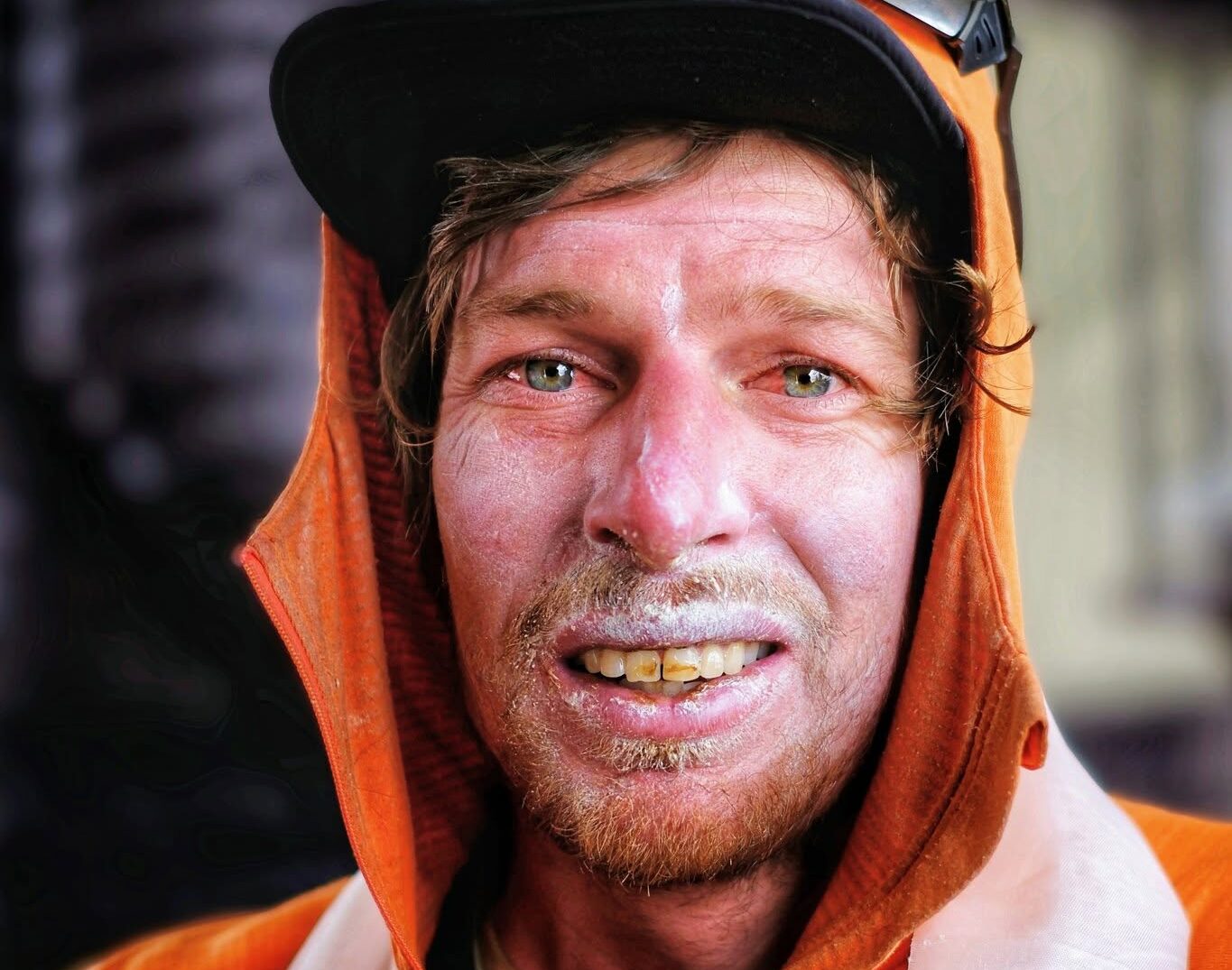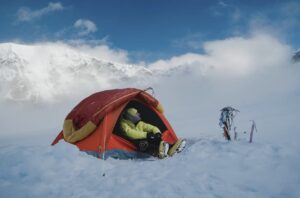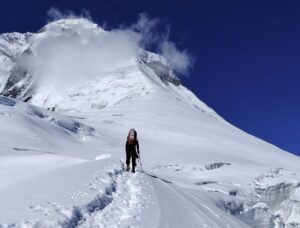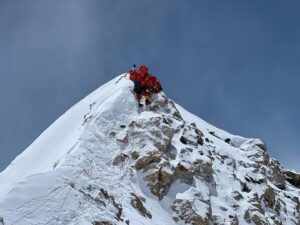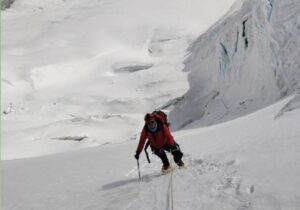Last weekend, Matthew Scholes decided to keep going toward the summit of Makalu after everyone else turned around. The 36-year-old Australian reached the top on his own, without Sherpas or supplementary oxygen. The exhausting solo push led to some frostbite in his toes that is now being treated in a hospital in Kathmandu.
Changabang veteran
Fellow Makalu climber Saulius Damulevicius told ExplorersWeb that Scholes bagged what is so far the only Makalu summit without bottled oxygen this season.
“He is a very humble guy,” said Damulevicius.
Indeed, Scholes was one of the three members of an Australia-New Zealand team that did the first repetition of the Boardman-Tasker route on the formidable west face of Changabang in 2022. ExplorersWeb highlighted that climb — the first success on that route after 46 years and over a dozen attempts — as one of the best expeditions of that year.

On top of Changabang in 2022, with Scholes at left. Photo: Daniel Joll
Scholes had arrived in Makalu in mid-April. By last Thursday, he had done some rotations, including two nights at Camp 2 and a day trip to Camp 3 (7,400m) and back. When word spread in Base Camp that the Sherpa team was going to reopen the route to the top, he joined others on the push. He climbed without oxygen or personal Sherpa support.
According to Damulevicius, Scholes moved to Camp 1 on May 1 and climbed all the way to Camp 3 on May 2. On May 3, he reached Camp 4. There, he met a small group of climbers, including Piotr Krzyzowski of Poland. Krzyzowski himself summited Everest and Lhotse in one go without oxygen last year.
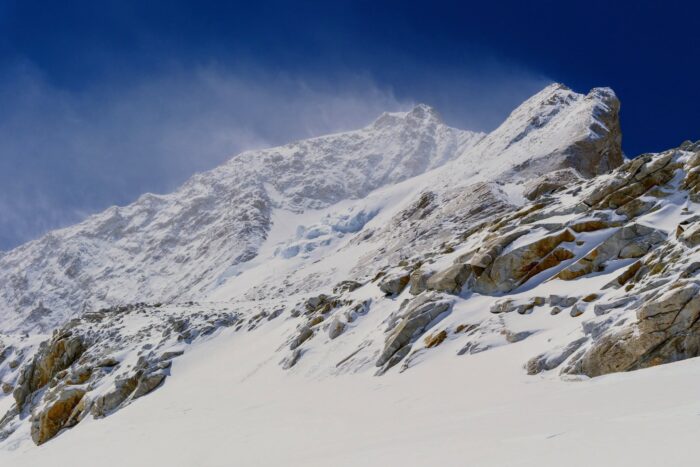
Makalu’s upper sections, including the French Couloir. Photo: Saulius Damulevicius
Damulevicious recalls the climb, based on what Scholes told him:
Left alone
That evening, at around 8 pm, Matt began the climb. At first, he was at the end of a long line of Sherpa guides with clients. However, as the guides could not find this season’s ropes and the confusion grew, he found himself at the front of the line. At 11:30 pm, the line of climbers turned around, and Matt was left alone. He decided to trust his strength and skills and continued the climb on his own.
ExplorersWeb asked Scholes about the decision to continue.
“The snow was deep the whole way except on the final summit ridge, and the weather was perfect, so it didn’t make sense to give up just because the fixed lines had been buried,” he explained.
Damulevicious saw Scholes at 10 am on May 4 as the Australian reached the top of the French Couloir. Scholes then reported summiting at 12:40 pm.
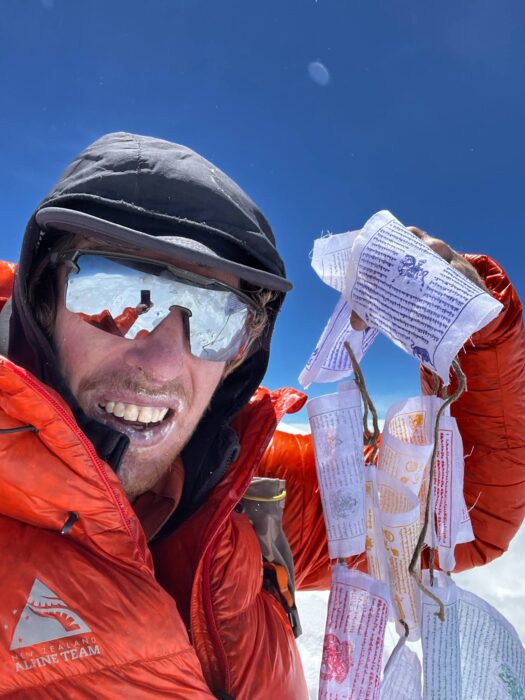
On the summit of Makalu, shared by Matthew Scholes with ExplorersWeb today.
An exhausted climber’s mistake
On the way down, Scholes reached his tiny tent at Camp 4 at the last light of day after a 23-hour push. The exhausted climber fell asleep instantly.
“It was a silly mistake, I didn’t take my boots off [when I returned to the tent] and my toes just wouldn’t come back,” Scholes told ExplorersWeb from a hospital in Kathmandu today. He is currently receiving treatment for frostbitten toes.
Scholes first checked his feet after waking up in Camp 4. He noticed they were numb.
Scholes stuffed his belongings in his backpack and later retrieved some more gear from Camp 2, which increased the weight of his pack to 30kg. He then continued down, reaching Advanced Base Camp at 3pm.
That’s when the cost of the climb became clear. “Eight out of 10 toes were dark in color and covered in blisters,” Damulevicius wrote.
Damulevicius said that Scholes had some first aid at ABC and received some oxygen, although he reported no pain and was in a good mood.
The Australian was evacuated to a hospital in Kathmandu today but downplayed his injuries.
“The people at Base Camp virtually wouldn’t let me move, but I am fine,” he said. “After all, I’d just walked off Makalu carrying all my stuff, and now I’m walking around the hospital, so it’s not that bad,” said Scholes.
Scholes was evacuated to the hospital together with Karol Priv Adamski of Poland, who suffered from Acute Mountain Sickness. The climbers knew of the passing of American Alex Pancoe, who died of a heart attack at Camp 2.
Summit push delayed
Damulevicius is himself preparing a no-O2 summit push and praised Scholes’ courage. “His determination, endurance, and skills are inspiring,” he wrote.
Damulevicius is on his second expedition to Makalu, after retreating just 200m below the summit in 2017, so he knows the place well.
“Makalu is very cold, high, and tough,” he told ExplorersWeb. “You need to persevere at ABC, which is simply too high, and then climb up [from there].”
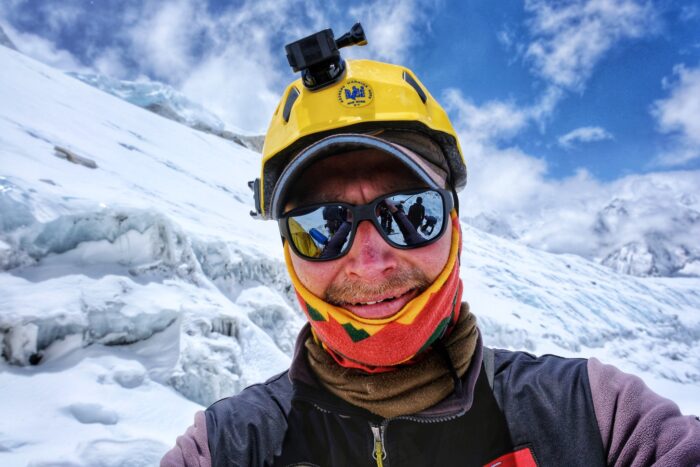
Saulius Damulevicius near Camp 2 during an acclimatization round on Makalu. Photo. Saulius Damulevicius
He is referring to the fact that Makalu’s Base Camp at 5,200m is not used much. After arriving, the climbers move to Advanced Base Camp at 6,100m and stay there. The terrain between camps is tricky with crevasses and steep ice, and you don’t want to keep shuttling back and forth. Part of the BC-ABC route requires fixed ropes, as Mingma Dorchi Sherpa explained in ExplorersWeb’s Makalu Climbers’ Guide. Commercial climbers usually take a helicopter back to Lukla when they need a rest or during a long spell of bad weather.
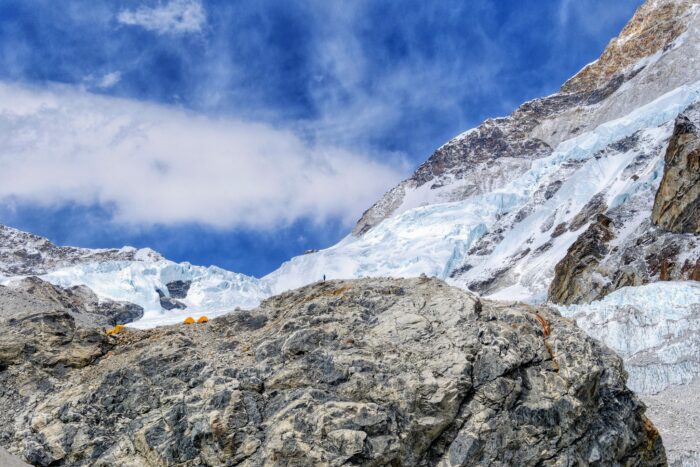
The tricky terrain leading to Makalu’s ABC. Photo: Saulius Damulevicius
Yesterday, everybody was back in ABC getting ready for a summit push. However, a new forecast predicts heavy snow for tomorrow, so Damulevicius and others have delayed their summit plans for 24 hours.
